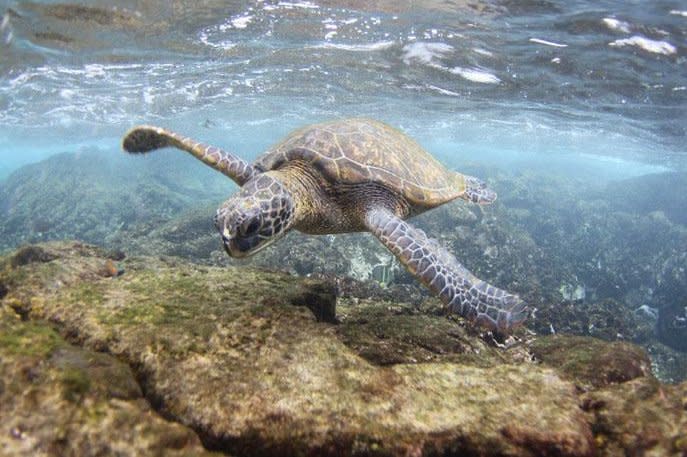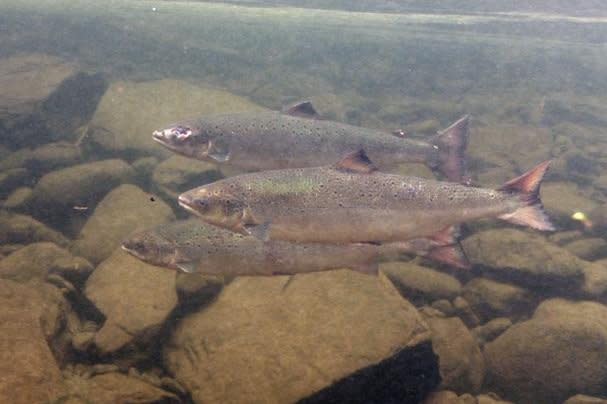Climate change, human activity add nearly 2,000 species to threatened list

Dec. 11 (UPI) -- Climate change and human activity are threatening global biodiversity more than ever, according to a report released Monday at the COP28 UN climate conference in the United Arab Emirates, which shows the list of species threatened with extinction growing by nearly 2,000 new species over last year.
The report by the International Union for Conservation of Nature, called the "Red List," measures the world's biodiversity and includes 157,190 species, of which 44,016 are now threatened with extinction. That compares to last year's Red List when 42,108 species were endangered due to human activity and warming temperatures.
"Climate change is menacing the diversity of life in our planet harbors, and undermining nature's capacity to meet basic human needs," said Dr. Grethel Aguilar, IUCN director general.
"This IUCN Red List update highlights the strong links between the climate and biodiversity crises, which must be tackled jointly," Aguilar added. "Species declines are an example of the havoc being wreaked by climate change, which we have the power to stop with urgent, ambitious action to keep warming below 1.5 degrees Celsius."
Among the endangered species are the Central South Pacific and East Pacific green turtle populations, according to the Red List report. Warmer waters have decreased hatching success as rising sea levels flood nests. The turtles are also dying off as a result of incidental bycatch in industrial fishing.

NEWS: From Atlantic salmon to green turtles, #ClimateChange threatens a growing number of species.
Learn more in the latest @IUCNRedList update launched at #COP28.https://t.co/zjuP0PWPlk pic.twitter.com/879VVL203V— IUCN (@IUCN) December 11, 2023
Climate change and human activity are also impacting the Atlantic salmon, which showed a global population decrease of 23% between 2006 and 2020. Warmer temperatures have impacted the Atlantic salmon's life cycle with reduced prey and an increase in invasive species. Human activity is also to blame as dams, water pollution and logging increase their mortality.
Monday's report included the first assessment of the world's freshwater species, which shows 25% are currently at risk of extinction, or near threatened, due to decreasing water levels, dams and overfishing.
BREAKING NEWS: Freshwater fish highlight escalating #climate impacts on species - @IUCNRedList https://t.co/zjuP0PWPlk#COP28 pic.twitter.com/qyhJv0T7FW— IUCN (@IUCN) December 11, 2023
"Freshwater fishes make up more than half of the world's known fish species, an incomprehensible diversity given that freshwater ecosystems comprise only 1% of aquatic habitat. These diverse species are integral to the ecosystem and vital to its resilience," said Kathy Hughes, co-chair of the IUCN SSC Freshwater Fish Specialist Group.
"Ensuring freshwater ecosystems are well managed, remain free-flowing with sufficient water, and good water quality is essential to stop species declines and maintain food security, livelihoods and economies in a climate resilient world," Hughes added.
Despite the rising number of species added to this year's endangered list, conservation efforts have saved two antelope species. The saiga antelope improved from "critically endangered" to "near threatened," due to extensive anti-poaching measures.
The scimitar-horned oryx also moved from "extinct in the wild" to endangered on the IUCN Red List after the species was reintroduced to Chad. By the end of the 1990s, the antelope had vanished from the African wild due to increased poaching and extreme droughts. In 2021, 331 calves were born in Chad.
"The scimitar-horned oryx is the fourth large mammal to have been successfully reintroduced to the wild in the past 100 years," said. Dr. David Mallon, co-chair of the IUCN SSC Antelope Specialist Group.
"The success of this project and the dramatic recovery of the saiga are the results of strategic vision, strong government commitment and investment, technical support from non-governmental organizations and scientific experts, and collaboration with local communities," he added.
As climate change impacts a large number of species of animals and fish, much of the biodiversity impacted by warmer temperatures and droughts are the plants and trees they depend on for housing and food.
"This year's IUCN update sees thousands of trees added to the IUCN Red List, many of which are timber species. These trees are often keystone species in forests as well as important for national and local economies. However, often they are at risk of extinction from unsustainable harvest," said Megan Barstow, conservation officer at Botanic Gardens Conservation International.
"The climate and biodiversity crises are two sides of the same coin. On the one hand, climate change is one of the drivers of documented declines in animals, fungi and plants, but on the other, the resilience of nature through recovery and regeneration of species and ecosystems is our most powerful ally to combat accumulation of greenhouse gases in the atmosphere," said Dr. Jon Paul Rodríguez, chair of the IUCN Species Survival Commission.
"This Red List update illustrates both the climate-related mechanisms behind declines of fishes and sea turtles, as well as the recovery of scimitar-horned oryx and saiga through proactive conservation action."

